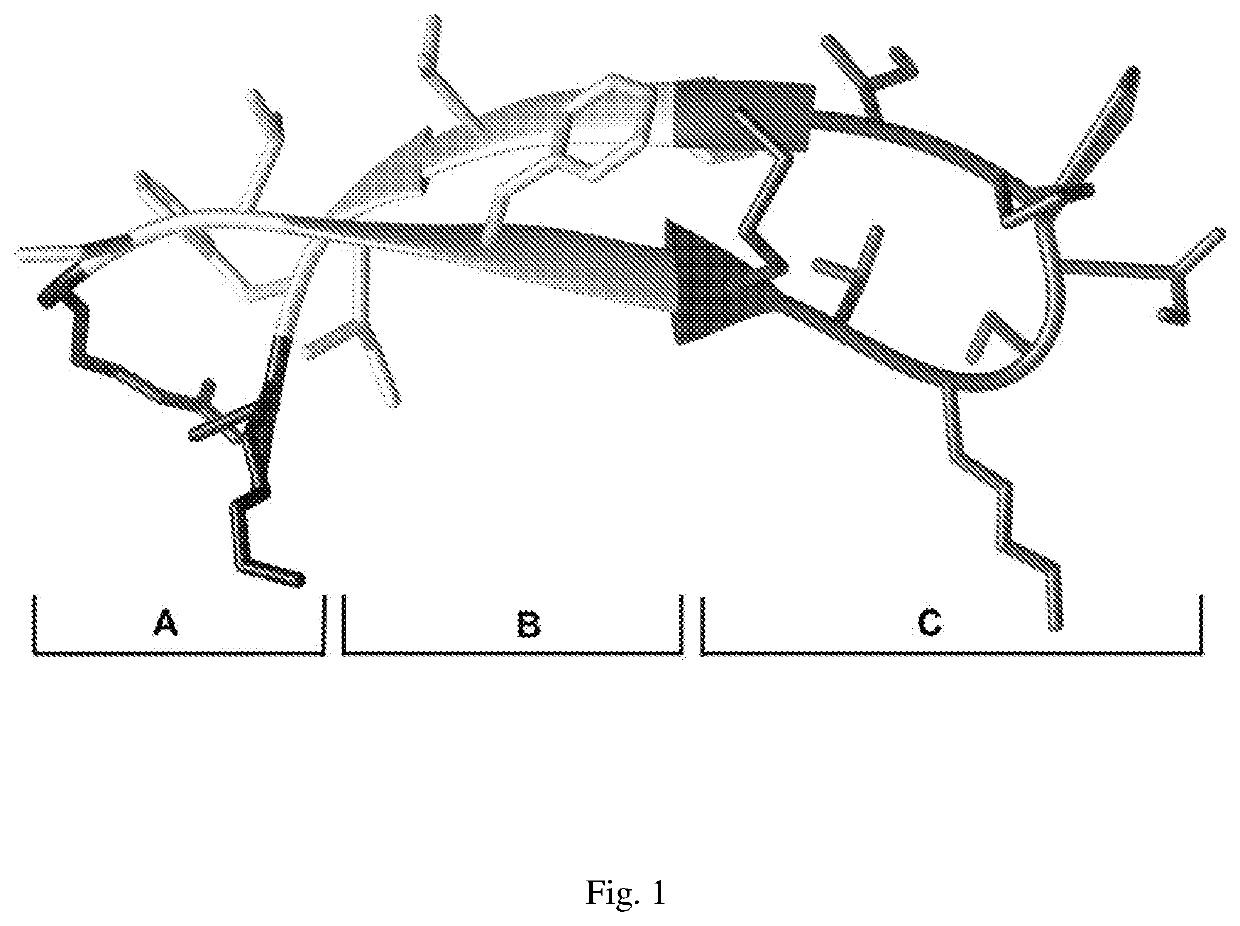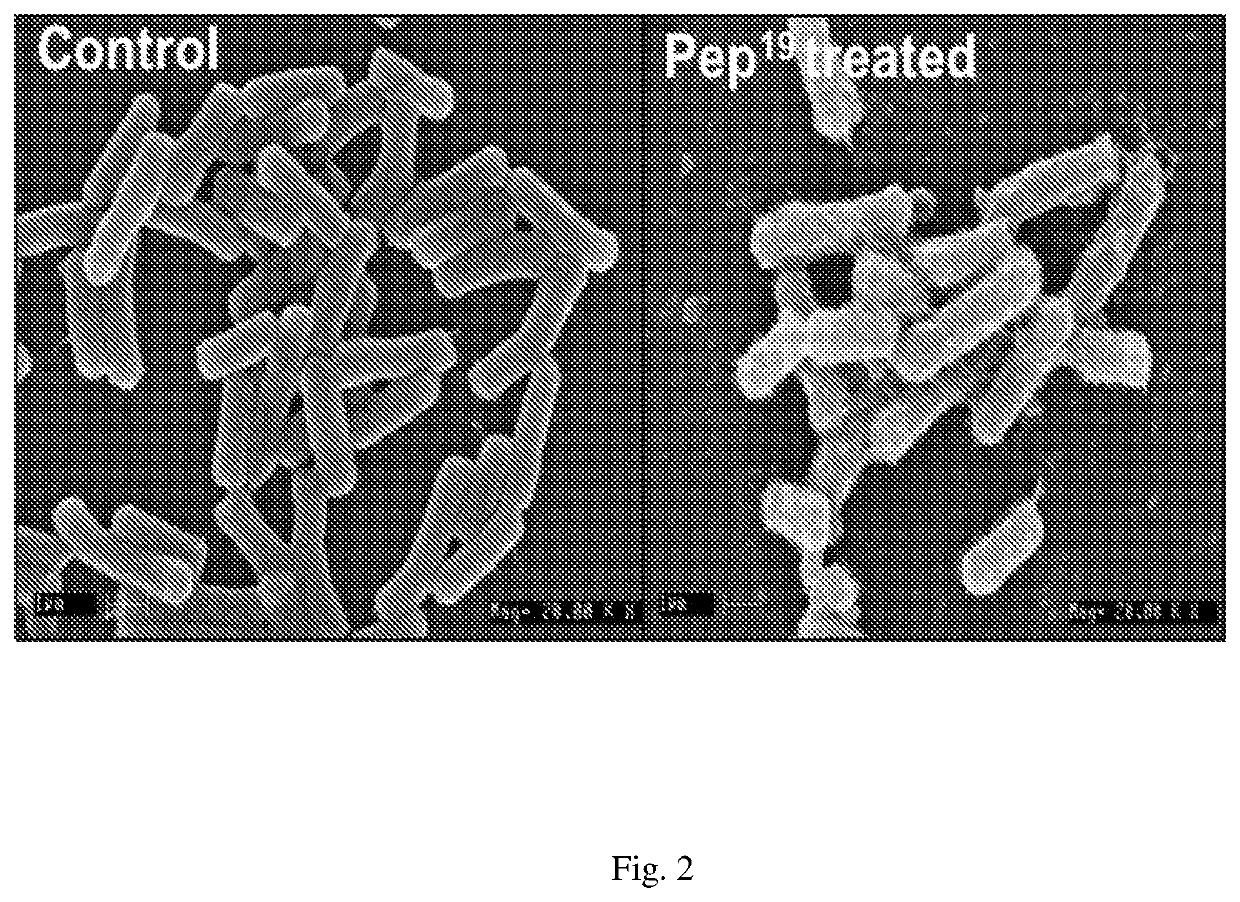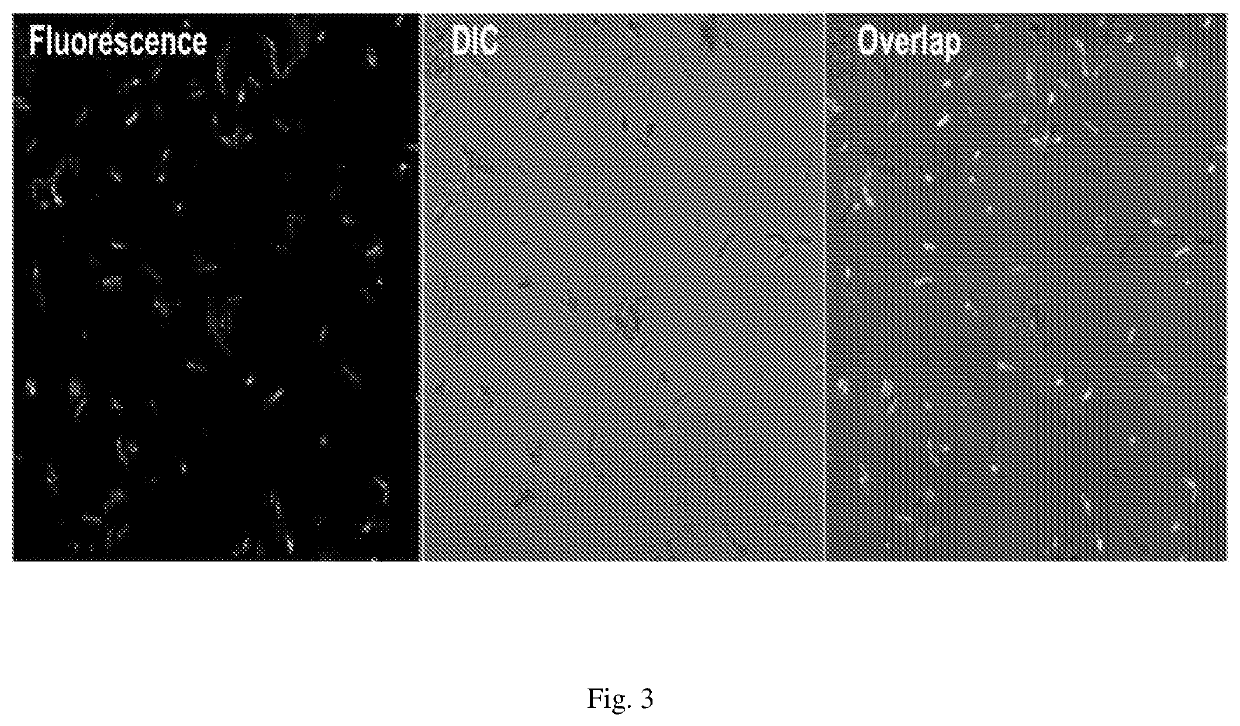Antimicrobial peptide and its use thereof
a technology of antimicrobial peptides and peptides, which is applied in the direction of detergent compounding agents, peptide sources, peptide/protein ingredients, etc., can solve the problems of reducing the application range, reducing the effect of antimicrobial activity, and exacerbated problems, and achieve the effect of enhancing stability
- Summary
- Abstract
- Description
- Claims
- Application Information
AI Technical Summary
Benefits of technology
Problems solved by technology
Method used
Image
Examples
example 1
d Process of Making the Peptide
[0044]For the design of antimicrobial peptide, we started out with the sequence and structure analysis of naturally available peptides. We identified structural motifs that may possess a particular activity. For example, the trypsin inhibitory motif [CTKSIPPIC] has serine protease inhibitory activity, wherein the presence of disulfides impart thermostability, and presence of hydrophobic and charged cationic residues in the peptide aids interaction with bacterial membranes. The key idea was to assemble these motifs into a single peptide, i.e distinct regions within the same peptide performing different function. For this work, we used the β-hairpin peptide of the bowman-birk inhibitor class of serine protease inhibitors. This class already has the trypsin inhibitory loop, and addition to hydrophobic and cationic residue segments allowed the incorporation of multiple properties into a single peptide. The assembly of these distinct motifs (each with speci...
example 2
bial Assays
[0046]Antimicrobial assays against various bacterial cultures were done using the micro dilution broth assay according to the Clinical and Laboratory Standards Institute. Four Gram-positive bacteria; Listeria monocytogenes ATCC13932, Bacillus cereus ATCC11778, Staphylococcus aureus ATCC12900, Micrococcus luteus ATCC4698 and Five Gram-negative bacteria; Escherichia coli ATCC11775, Pectobacterium carotovorum MCC2112, Klebsiella pneumoniae MTCC4032, Pseudomonas aeruginosa MTCC4673 and Salmonella typhimurium ATCC9844 were used in this study. All ATCC strains were procured from the American Type Culture Collection (ATCC, Manassas, Va., USA). All MTCC strains were procured from Microbial Type Culture Collection (MTCC, Chandigarh, India). All MCC strains were procured from Microbial Culture collection (MCC, Pune, India). Mueller-Hinton broth was used to dilute the peptide stock and the bacterial inoculum. Inoculum was prepared from the mid logarithmic phase culture. Each well of...
example 3
[0047]For sample preparation, B. cereus cells were grown in LB broth at 37° C. to mid log phase under continuous shaking at 180 RPM. Cells were harvested by centrifugation at 5,500 RPM for 5 min, washed thrice with 10 mM PBS (phosphate buffer saline), diluted 1×108 CFU / mL with PBS. Cells were incubated with 2× MIC of peptide in a 500 μL reaction for 1 hour. Control cells were incubated without peptides. After incubation cells were harvested by centrifugation at 8,000 RPM for 5 min, washed thrice with PBS, fixed with 2.5% (w / v) glutaraldehyde at room temperature for 4 hours, followed by washing twice with PBS. The cells were dehydrated for 10 min with a graded ethanol series (25%, 50%, 75%, 95%, and 100%). Pellet was dissolved in 100% ethanol and dried. The samples were mounted on the specimen holder and sputter-coated with gold. Samples were transferred to electron microscope (LEO 435 VP, USA) and observed. Results showed that the bacterial plasma membrane was tho...
PUM
| Property | Measurement | Unit |
|---|---|---|
| Antimicrobial properties | aaaaa | aaaaa |
Abstract
Description
Claims
Application Information
 Login to View More
Login to View More - R&D
- Intellectual Property
- Life Sciences
- Materials
- Tech Scout
- Unparalleled Data Quality
- Higher Quality Content
- 60% Fewer Hallucinations
Browse by: Latest US Patents, China's latest patents, Technical Efficacy Thesaurus, Application Domain, Technology Topic, Popular Technical Reports.
© 2025 PatSnap. All rights reserved.Legal|Privacy policy|Modern Slavery Act Transparency Statement|Sitemap|About US| Contact US: help@patsnap.com



